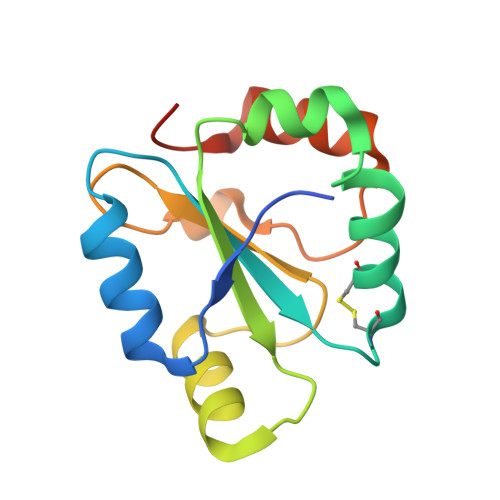An Extended Active-site Motif Controls the Reactivity of the Thioredoxin Fold.
Mavridou, D.A., Saridakis, E., Kritsiligkou, P., Mozley, E.C., Ferguson, S.J., Redfield, C.(2014) J Biol Chem 289: 8681-8696
- PubMed: 24469455
- DOI: https://doi.org/10.1074/jbc.M113.513457
- Primary Citation of Related Structures:
4IP1, 4IP6 - PubMed Abstract:
Proteins belonging to the thioredoxin (Trx) superfamily are abundant in all organisms. They share the same structural features, arranged in a seemingly simple fold, but they perform a multitude of functions in oxidative protein folding and electron transfer pathways. We use the C-terminal domain of the unique transmembrane reductant conductor DsbD as a model for an in-depth analysis of the factors controlling the reactivity of the Trx fold. We employ NMR spectroscopy, x-ray crystallography, mutagenesis, in vivo functional experiments applied to DsbD, and a comparative sequence analysis of Trx-fold proteins to determine the effect of residues in the vicinity of the active site on the ionization of the key nucleophilic cysteine of the -CXXC- motif. We show that the function and reactivity of Trx-fold proteins depend critically on the electrostatic features imposed by an extended active-site motif.
Organizational Affiliation:
From the Department of Biochemistry, University of Oxford, South Parks Road, Oxford OX1 3QU, United Kingdom and.














